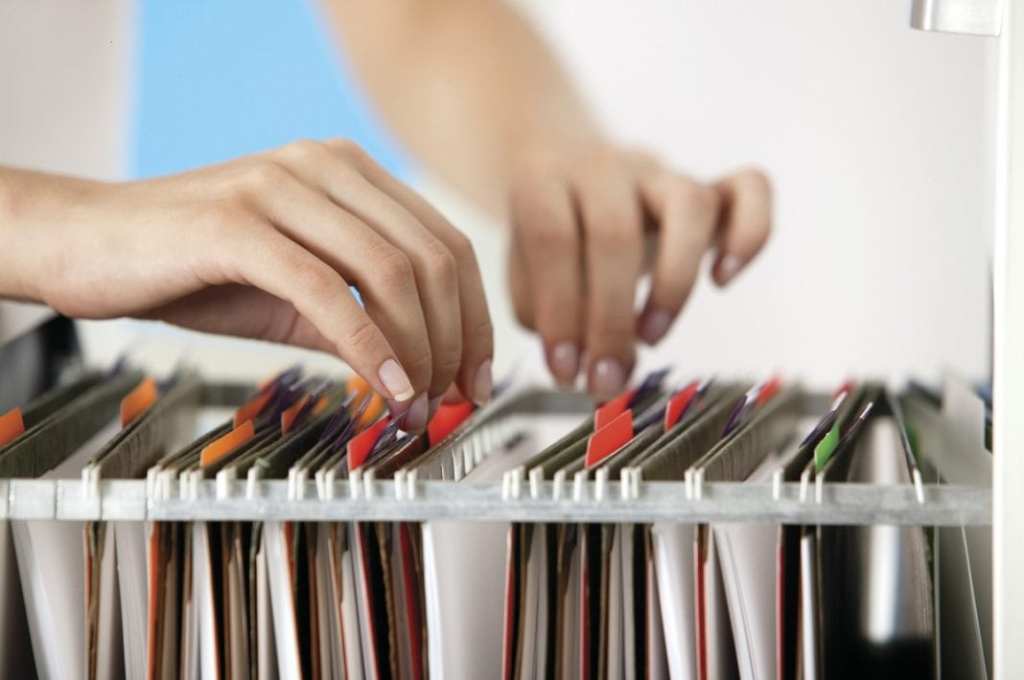
With digital technology many of us have greatly reduced the need to keep paper copies of important documents but there will always be some documents you need to save.
Having an efficient, organized filing system will allow you to easily file and find your documents.
What Type of Storage to Use
You can choose whatever storage container makes sense to you, a filing cabinet, fireproof safe, tote, file drawer or anything else that can hold your files and folders. You want it to be something you can easily access and sort through. I like the idea of using a fireproof safe as it will protect your documents from theft and fire, try to put the most critical documents in a safe even if the rest of your files are located elsewhere. Critical documents can include, birth certificates, death certificates, marriage licenses, Social Security cards, wills, trusts, powers of attorney, healthcare proxies, vaccination records, legal and financial records, credit cards, personal files, insurance cards, passports, the deed to your home, a copy of your usernames and passwords, the titles for your vehicles, a document with contact information for important people and establishments and anything else that is important.
Purchase Supplies
Purchase whatever storage container you have decided to use. Buy the file folders and labels, if you are using a filing cabinet or other storage container that supports hanging folders buy those as well.
You might also want to purchase a shredder to use when disposing of documents. Anything personal or confidential should be shredded before you throw it away. This prevents identity theft.
Get Started
Start by organizing all your papers into separate piles based on categories and what names you will assign to the folders where the files will be kept, for example “Banking Information” “Insurance” “Home Maintenance” “Medical Information” etc. From there create subcategories, to get more specific.
Next create labels for each category. If you like you can color code the labels and folders to help you identify and find items more easily.
Attach the labels to the folders and then arrange then in the storage container. You can alphabetize the folders or arrange them by category, whatever makes sense and works best for you.
Once the folders are labeled and ready put the documents into the appropriate folders.
When placing papers inside of folders, you should organize papers in either chronologic or reverse chronologic order. This will make it easy to retrieve the documents when you need them.
File Consistently
File documents daily or weekly so that they do not accumulate making the task more tedious.
Create a Digital Copy
When you receive a new document if it is something you are going to file, scan a copy to your computer first. There may be documents you can scan and then discard the original, this helps to reduce paper clutter.
Even if you do keep the original having an electronic copy as a backup is useful. On your computer create sub-folders inside of the documents folder to organize the digital copies. Give the folders the same name as your paper folders to keep everything organized and consistent.
Review Often
Review the contents of your file folders often and shred and throw away anything that is outdated or no longer need. When you receive new documents file them at that time and if the document is replacing another, for example an insurance policy renewal shred and discard the one from the previous year. Cleaning up as you go.
